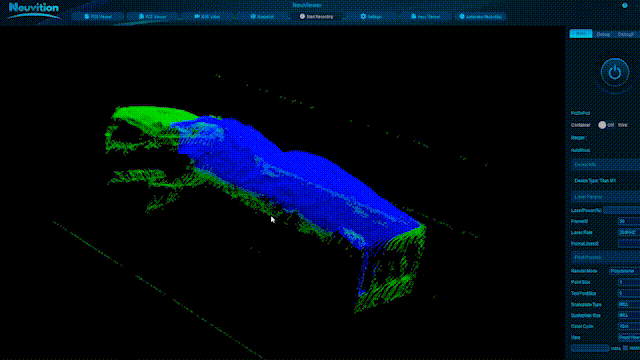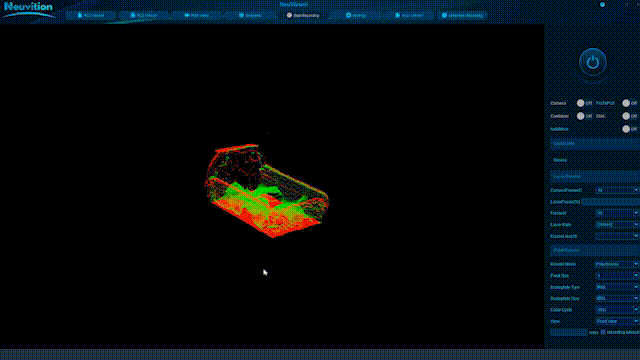Implementing a LiDAR System for Monitoring Bulk Truck Load Capacities
Author: Release time:2023-11-13 09:36:30
In the world of logistics and transportation, accurately monitoring the load capacities of bulk trucks is crucial for ensuring safety, efficiency, and compliance with regulations. Traditional methods of load monitoring often rely on manual measurements or estimations, which can be time-consuming and prone to errors. However, with advancements in technology, implementing a LiDAR (Light Detection and Ranging) system offers an innovative solution for real-time load capacity monitoring. In this blog post, we will explore the technical aspects of implementing a LiDAR system for monitoring bulk truck load capacities.
What is LiDAR?
LiDAR is a remote sensing technology that uses laser light to measure distances and create detailed 3D maps or point clouds of objects or environments. It works by emitting laser pulses toward a target object or surface and measuring the time it takes for the reflected light to return to the sensor. By analyzing these measurements, LiDAR systems can accurately determine distances and create high-resolution 3D representations.
Components of a LiDAR System
To implement a LiDAR system for monitoring bulk truck load capacities, several key components are required:
1. Laser Source: The laser source emits short pulses of laser light towards the target object or surface.
2. Optics: The optics consist of lenses and mirrors that focus and direct the emitted laser pulses toward the target area.
3. Photodetector: The photodetector receives the reflected light from the target area after it has interacted with objects in its path.
4. Timing Electronics: The timing electronics measure precisely how long it takes for each pulse to travel from the sensor to an object in its path and back again.
5. Data Processing Unit: The data processing unit analyzes all incoming data from multiple pulses to generate accurate distance measurements. The data collected by the LiDAR sensors is processed in real-time using advanced algorithms that analyze point cloud data. These algorithms can identify objects within the cargo area and calculate their volume based on distance measurements.

6. Software Interface: A software interface allows users to visualize and interpret the data collected by the LiDAR system. The calculated volume data from the LiDAR system is then fed into load management software that compares it with predefined weight-to-volume ratios specific to different types of cargo being transported. The results obtained from the load management software are displayed on an interface accessible to both drivers and fleet managers in real time.
Implementing a LiDAR System for Load Capacity Monitoring
To implement a LiDAR system for monitoring bulk truck load capacities, the following steps can be followed:
1. Sensor Placement: Install the LiDAR sensor in a suitable location on the bulk truck, such as above or near the loading area. Ensure that it has an unobstructed view of the load.
2. Calibration: Calibrate the LiDAR system to account for any variations in laser beam alignment or sensor positioning. This step is crucial for accurate distance measurements.
3. Data Collection: Activate the LiDAR system and start collecting data by emitting laser pulses towards the load area. The reflected light will provide information about the distances between objects within its range.
4. Distance Calculation: Use timing electronics and data processing algorithms to calculate precise distances between objects within the target area based on time-of-flight measurements.
5. Load Capacity Estimation: By analyzing distance measurements, it is possible to estimate load capacities based on the known dimensions of bulk trucks and their maximum allowable loads.
6. Real-Time Monitoring: Continuously monitor load capacities in real-time using live data from the LiDAR system’s software interface. Set up alerts or notifications if load capacities exceed predefined thresholds.
Benefits of Implementing a LiDAR System
Implementing a LiDAR system for monitoring bulk truck load capacities offers several benefits:
1. Accuracy: Unlike manual measurements or estimations, which can be prone to errors, a LiDAR system provides highly accurate distance measurements, leading to precise load capacity estimations.
LiDAR technology provides highly accurate measurements of the cargo volume, allowing for precise load monitoring. This helps prevent overloading and ensures compliance with weight regulations.
2. Efficiency: With real-time monitoring capabilities, logistics operators can optimize loading processes and ensure that trucks are loaded to their maximum capacity without exceeding legal limits or compromising safety.
3. Safety Compliance: By accurately monitoring load capacities, companies can ensure compliance with weight regulations imposed by transportation authorities, reducing risks associated with overloading.
Overloaded trucks pose a significant safety risk on the roads. By implementing a LiDAR system, companies can ensure that their trucks are within safe weight limits, reducing the chances of accidents caused by instability or braking issues.
4. Time Savings: LiDAR systems automate the load monitoring process, eliminating the need for manual measurements or estimations. This saves time and allows logistics operators to focus on other critical tasks.
5. Cost Savings: Overloading not only increases fuel consumption but also leads to increased wear and tear on vehicles and infrastructure. By accurately monitoring load capacities with a LiDAR system, companies can optimize their operations, reduce maintenance costs, and extend the lifespan of their assets.
6. Data Insights: The data collected by a LiDAR system can provide valuable insights into loading patterns, distribution of weight within trucks, and potential areas for improvement in the logistics process.

7. Compliance with Regulations: Many countries have strict regulations regarding truck weights to protect road infrastructure from damage caused by overloaded vehicles. Implementing a LiDAR system helps companies comply with these regulations and avoid penalties or legal consequences.
Conclusion
Implementing a LiDAR system for monitoring bulk truck load capacities offers a technologically advanced solution that enhances safety, efficiency, and compliance in the transportation industry. By leveraging laser-based distance measurements and real-time data analysis, logistics operators can optimize their loading processes while ensuring adherence to legal weight limits. With continuous advancements in LiDAR technology, we can expect further improvements in accuracy and functionality, making it an indispensable tool for load capacity monitoring in the future.